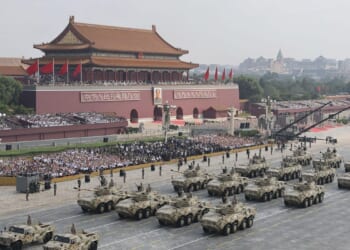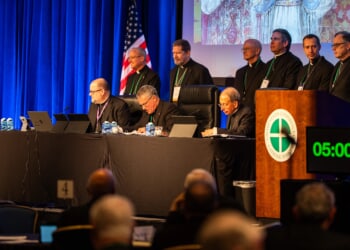One hundred years ago this month, the Ford Motor Company produced 10,000 Model T cars in one day.
That level of production for one specific car would never be matched as production lines added new models to inventory, but this output in 1925 would validate the theories of Adam Smith that specialties of labor in production would efficiently produce more of a product at a lower per unit cost.
At the height of WWII, the daily production at American factories produced almost 250 tanks, 150 planes, and 2 liberty ships.
Smith hard argued 150 years earlier that efficiencies could be realized when a manufacturing process was unbundled to allow better division of labor such that parts of production would be handled by specialists in a particular area.
The assembly line would take this idea to a new level. Rather than having a factory in which one worker assembled several items, Ford would begin a process to limit its workers’ skills to a more specialized area of production that manufactured cars faster and, ultimately, at lower costs.
Instead of having workers construct an entire car, Ford trained workers to focus on a small portion of the required assembly which would allow cars to roll off the factory line at a staggering pace. This new way of working created several results.
First, production costs decreased dramatically. A century ago, a Model T cost $260, or roughly $6,500 in today’s purchasing power, but building a car one worker at a time would have cost many times that amount. In addition, Ford was able to pay workers the unheard-of sum of $5 a day, which seems like a pittance today, but in 1925, the average worker earned around $2.15 daily.
As a result, workers flocked to Ford factories, which provided managers with their choice of conscientious hires. Ford’s higher wages made employees become more dependable and loyal to the company, resulting in further increased productivity. This wage also gave workers more disposable income, allowing them to save, invest, and consume other goods and services. Opportunities abounded in and around factories, creating a larger and stronger middle class.
Ford’s great innovation went beyond just inventing the Model T as motorized cars had been developed by others in Western countries. The real genius was creating an assembly line that could turn out a completed car in less than five minutes.
Ford solved the problem that still bedevils inventors and entrepreneurs even today — taking a good product and scaling production to meet demand. Many worthy products have been invented, but no matter how good the product and no matter what needs the new good meets, failing to expand to large scale production can doom commercial success.
Even in the 21st Century’s age of robotics, technology and highly refined production processes, matching the size and scope of Ford’s manufacturing remains staggering. By comparison, the Hyundai plant in Montgomery produces around 1,500 cars daily, and the Mercedes facility near Tuscaloosa makes around 750. Obviously, the components of a Model T were much smaller and allowed for quicker assembly, but even so, producing 10,000 units of anything a day, 100 years ago, is worth remembering.
If the construction of cars was scalable using Ford’s assembly line, the same knowledge and experience was scalable for other products. In fact, Ford’s milestone achievement was emulated by other industries and started the dominance of the United States in factory production. The innovation of the assembly line created new products that consumed more raw materials, creating a ripple effect through the national economy.
One of the reasons the roaring 1920’s bellowed was the increase in wages, which created more demand for goods and services and expanded the overall economy. Factories made labor more fluid, and workers gained more opportunities, so the 10,000 units a day production would be replicated in other industries with similar effect.
While the Great Depression would stall demand for goods and services, the assembly line would continue to churn out products, though not nearly at the same rate. As bad as the economic pain was in the United States, it was even worse in other parts of the world. The vastness and diverse topography of our nation cushioned some of the worst aspects of the Depression. And while the New Deal stumbled to reignite the national economy through regulations, the resourcefulness of American workers and our natural resources created small expansions in the economy.
Though the assembly line was scaled back as demand receded, workers and industry still retained the know-how of muscle memory to ramp up production as the economy improved. If any adversary had produced a national estimate of the U.S. economy in the late 1930s, hidden from any calculation would be the potential might of fully operational assembly lines.
When foreign intelligence agencies from belligerent nations examined a snapshot of the United States at the beginning of World War II, they likely reasoned there was nothing to fear. After all, America was still a rural country with industrial development contained in the Northeast and Midwest.
The U.S. had one of the smallest armies in the world, and its industrial might seemed limited to consumer goods. Completely overlooked was the pent-up potential of assembly lines producing tanks, planes, and ships. Once our country was attacked and became fully engaged in the World War, assembly lines transitioned from producing consumer goods to manufacturing military machines.
At the height of WWII, the daily production at American factories produced almost 250 tanks, 150 planes, and 2 liberty ships. The production of other war materials was equally great and dwarfed the production of any rival nation. No one could have predicted that the industrial might of the United States could scale up so quickly to produce weapons of war.
One hundred years ago, the remarkable production occasioned by Ford’s assembly line would create the infrastructure supplying the military might that armed the Allies to win a global conflict and made the U.S. the only true superpower in the world.
READ MORE:
MacArthur Returns to the Philippines: Remembering October 20, 1944
The Elusive ‘Conservative Consensus’
Will Sellers is a graduate of Hillsdale College and is an Associate Justice on the Supreme Court of Alabama. He is best reached at [email protected]

![Scott Bessent Explains The Big Picture Everyone is Missing During the Shutdown [WATCH]](https://www.right2024.com/wp-content/uploads/2025/11/Scott-Bessent-Explains-The-Big-Picture-Everyone-is-Missing-During-350x250.jpg)












